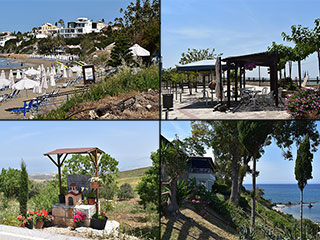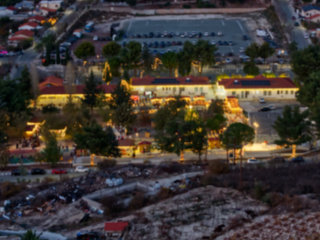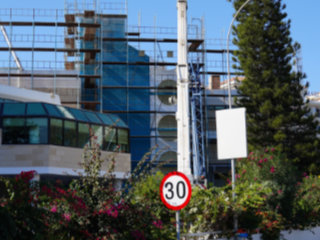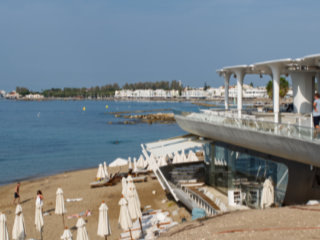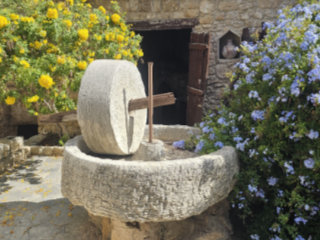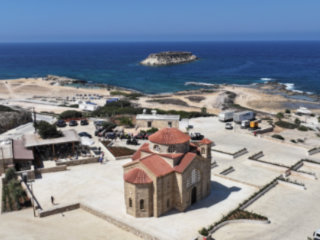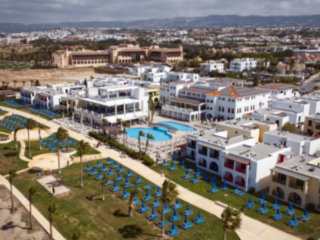The History of Paphos in 16 Pictures
The Sanctuary of the Goddess
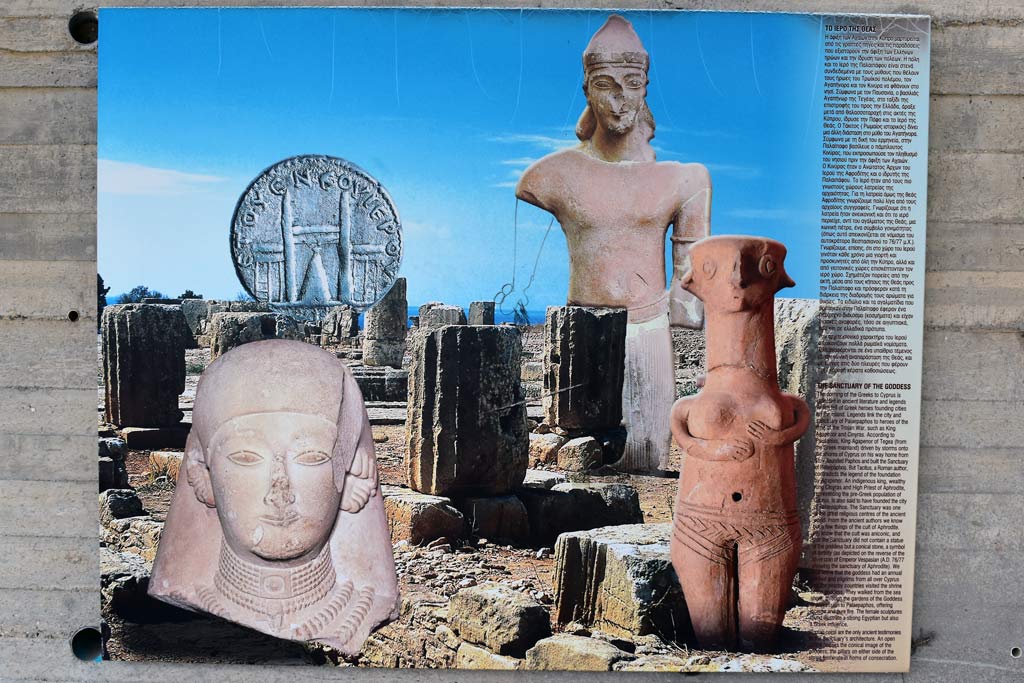
The coming of the Greeks to Cyprus is reflected in ancient literature and legends which tell of Greek heroes founding cities on the island. Legends link the city and sanctuary of Palaepaphos to heroes of the time of the Trojan War, such as King Agapenor and Cinyras. According to Pausanias, King Agapenor of Tegea (from the Greek mainland) driven by storms onto the shores of Cyprus on his way home from Troy, founded Paphos and built the Sanctuary of Palaepaphos. But Tacitus, a Roman author, contradicts the legend of the foundation by Agapenor. An indigenous king, wealthy King Cinyras and High Priest of Aphrodite, representing the pre-Greek population of Cyprus, is also said to have founded the City of Palapaphos. The Sanctuary was one of the great religious centres of the ancient world. From the ancient authors we know but a few things of the cult of Aphrodite. We know that the cult was aniconic, and that the Sanctuary did not contain a statue of the goddess, but a conical stone, a symbol of fertility (as depicted on the reverse of the silver coin of Emperor Vespasian (AD 76/77 showing the sanctuary of Aphrodite). We also know that the goddess had an annual festival and pilgrims from all over Cyprus and the nearby countries visited the shrine of the goddess. They walked from the sea shore, through the gardens of the Goddess in procession to Palaepaphos, offering incense and pure fire. The female sculptures found illustrate a strong Egyptian but also a Greek influence.
Roman coins are the only ancient testimonies to the Sanctuary's architecture. An open shrine houses the conical image of the goddess, the pillars on either side of the shrine terminate in horns of consecration.

The Ionian Revolt
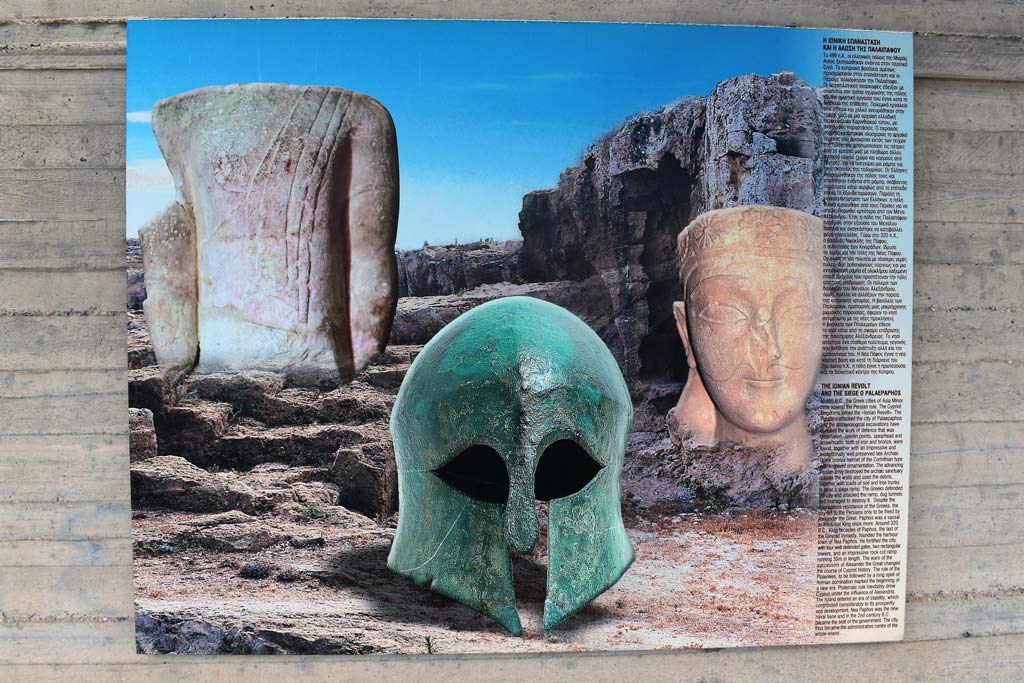
The Ionian Revolt and the Siege of Palaepaphos
In 499BC, the Greek cities of Asia Minor rose against the Persian rule. The Cypriot kingdoms joined the "Ionian Revolt". The Persians attached the city of Palaepaphos and the archaeological excavations have revealed the work of defence that was undertaken. Javelin points, spearhead and arrowheads, both of iron and bronze, were found, together with an impressive an exceptionally well preserved late Archaic Greek bronze helmet of the Corinthian type with engraved ornamentation. The advancing Persian army destroyed the archaic sanctuary outside the walls and used the debris, together with loads of soil and tree trunks to raise a siege ramp. The Greeks defended the city and attacked the ramp, dug tunnels and managed to destroy it. Despite the courageous resistance of the Greeks, the city fell to the Persians only to be freed by Alexander the Great. Paphos was a vassal to the Great King once more. Around 320BC, King Nicocles of Paphos, the last of the Cinyrad dynasty, founded the harbour town of Nea Paphos. He fortified the city with four well defended gates, two rectangular towers, and an impressive rock cut ramp running 35m in length. the wars of the successors of Alexander the Great changed the course of Cypriot history. The rule of the Ptolemies, to be followed by a long spell of Roman domination marked the beginning of a new era. Ptolemaic rule inevitably drew Cyprus under the influence of Alexandria. The island entered an era of stability, which contribuetd considerable to its prosperity and development. Nea Paphos was the new naval base and in the 2nd century BC became the seat of the government. The city thus became the administrative centre for the whole island.
Nea Paphos
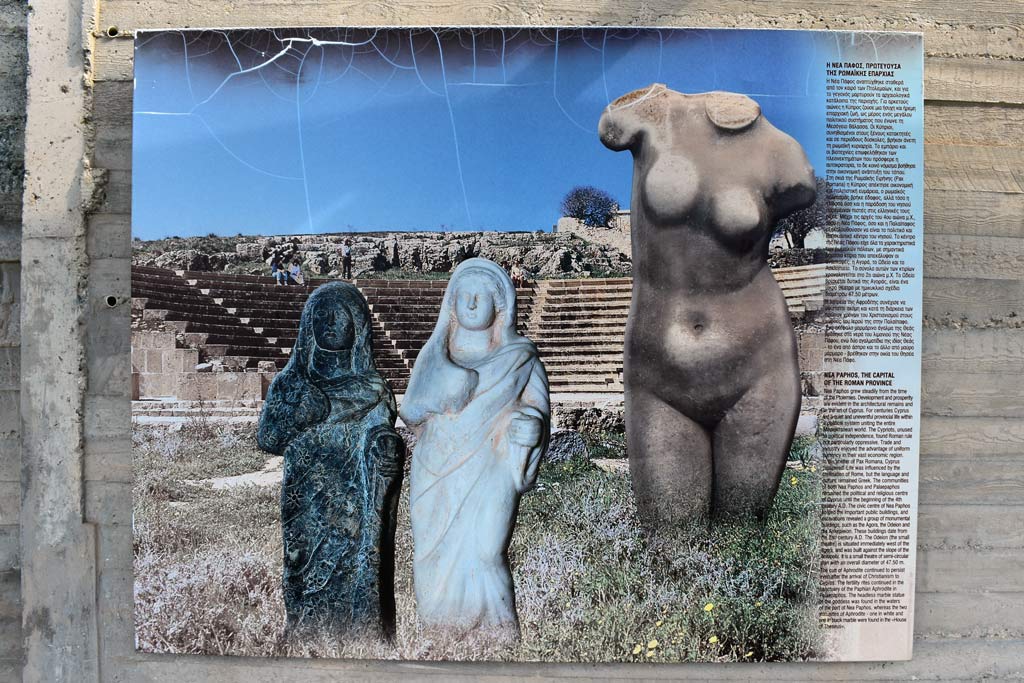
Nea Paphos, The Capital of the Roman Province
Nea Paphos grew steadily from the time of the Ptolemies. Development and prosperity are evident in the architectural remains and in the art of Cyprus. For centuries Cyprus led a quiet and uneventful provincial life within a political system uniting the entire Mediterranean world. The Cypriots, unused to political independence, found Roman rule not particularly oppressive. Trade and industry enjoyed the advantage of uniform currency in the vast economic region. In the shelter of Pax Romana, Cyprus prospered. Life was influenced by the civilisation of Rome, but the language and culture remained Greek. The communities of both Nea Paphos and Palaepaphos remained the political and religious centre of Cyprus until the beginning of the 4th century AD. The civic centre of Nea Paphos hosted the important public buildings, and excavations revealed a group of monumental buildings, such as the Agora, the Odeion and the Askepieion. These buildings date from the 23nd century AD. The Odeion (the small theatre) is situated immediately west of the Agora, and was built against the slope of the Acropolis. It is a small theatre of semi-circular plan with an overall diameter of 47.50 metres.
The cult of Aphrodite continued to persist even after the arrival of Christianism to Cyprus. The fertility rites continued in the santuary of the Paphian Aphrodite in Palaepaphos. The headless marble statue of the goddess was found in the waters of the port of Nea Paphos, whereas the two statuettes of Aphrodite - one in white and one in black marble were found in the "House of Theseus".
The Tomb of the Kings
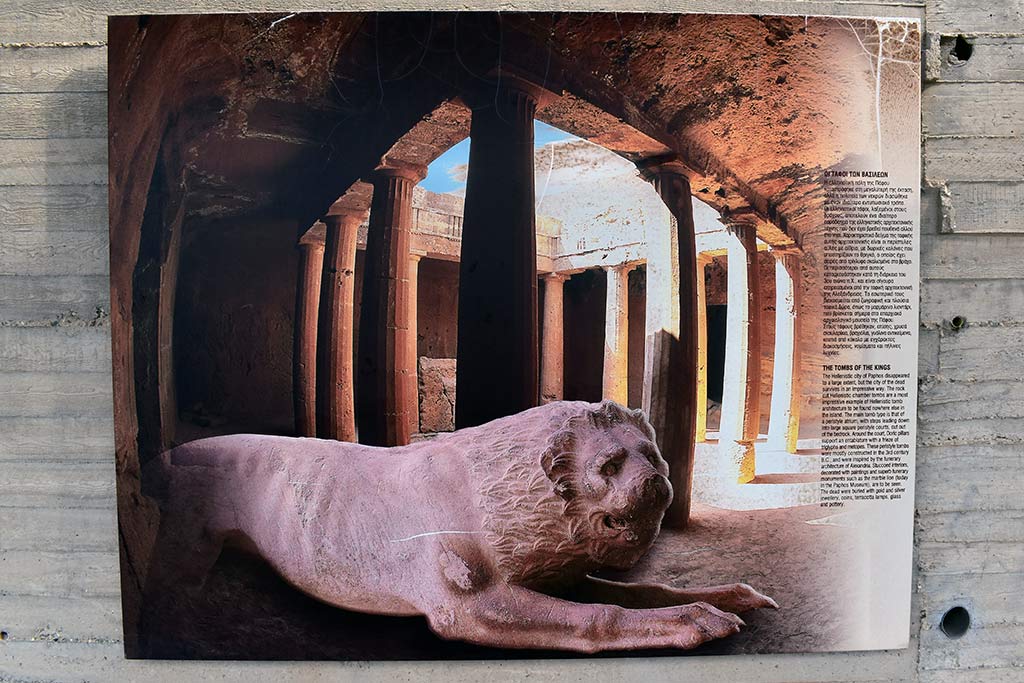
The Hellenistic city of Paphos disappeared to a large extent, but the city of the dead survives in an impressive way. The rock cut Hellenistic chamber tombs are a most impressive example of Hellenistic tomb architecture to be found nowhere else in the island. The main tomb type is that of a peristyle atrium, with steps leading down into large square peristyle courts, cut out of the bedrock. Around the court, Doric pillars support an entablature with a frieze of triglyphs and metopes. these peristyle tombs were mostly constructed in the 3rd century BC, and were inspired by the funerary architecture of Alexandria. Stuccoed interiors, decorated with paintings and superb funerary monuments such as the marble lion (today int he Paphos Museum), are to be seen. The dead were buried with gold and silver jewellery, coins, terracotta lamps, glass and pottery.
Leda and the Swan
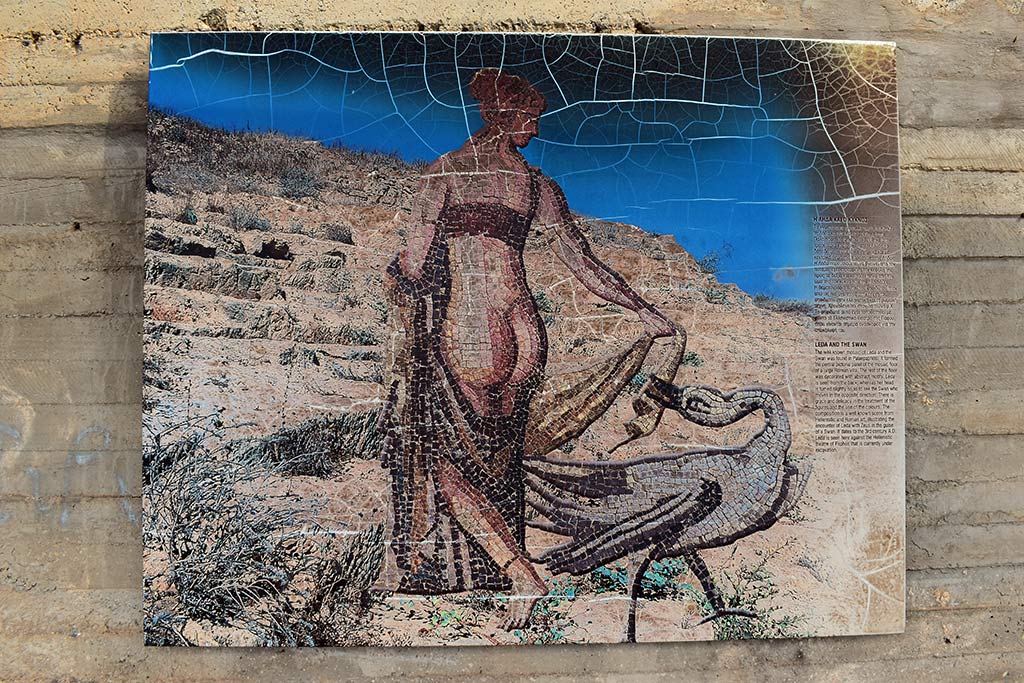
The well known mosaic of Leda and the Swan was found in Palaepaphos. It formed the central pictorial panel of the mosaic floor of a large Roman villa. The rest of the floor was decorated with abstract motifs. Leda is seen from the back, whereas her head is turned slightly so as to see the Swan who moves in the opposite direction. There is grace and delicacy in the treatment of the figures and the use of the colours. The composition is a well known scene from Hellenistic and Roman art, illustrating the encounter of Leda with Zeus in the guise of a Swan. It dates to the 3rd century AD. Leda is seen here against the Hellenistic theatre of Paphos that is currently under excavation.
Page 2 of 4


Related Blogs:
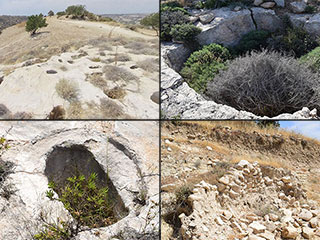
Souskiou Cemetery
Last spring we blogged about our visit to the abandoned village of Souskiou in the Diarizos Valley. We received numerous comments, some of which alluded to an ancient cemetery that lurked in the nearby hills. Well, this naturally piqued our curiosity, and we resolved to track them down. Over the next few months we made numerous excursions, and this is a summary of what we found...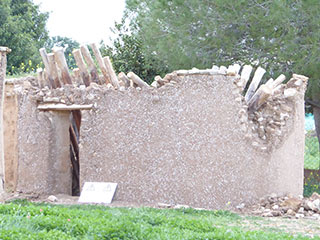
Ancient Lemba
Yesterday a news headline caught my eye: "An ancient Chalcolithic settlement site in Lemba in Paphos urgently requires maintenance, according to the local community leader". We had visited this site before, so I thought I should revisit it to see just how urgent the maintenance was...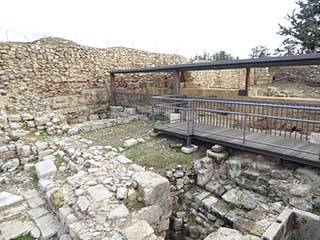
The Ancient Sugar Factory At Kouklia
As you drive along the A6 from Paphos to Limassol, you will pass the Asprokemmos Dam on your left. Just after that you will see some old ruins. This is the site of an ancient sugar factory.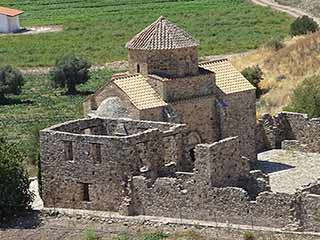
Sinti Monastery
It's time for another guest blog, and this time Max has taken a break from his minerals to show us somewhere a bit more spiritual. Over to you Max... Sinti Monastery is a very important ancient monument and not far away from Paphos, in the beautiful Xeros River Valley. I thought I would take a round trip. In order that people can visit the place all year round (even after a good Winter's rain) in a normal car I took the longer route over the hills where the roads nowadays are all properly surfaced. On the way back you can either take the same road (Winter) or use the short cut along the Xeros river bed which is only 8 km until the next village Nata.Good Pages To Visit
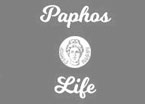
FB PagePaphos Life on Facebook
Like us on Facebook and stay notified of new blog posts.

FB PageOur Facebook Chat Group
Paphos Chat has been created for people who like our site and want to chat using Facebook. You can also easily upload photos of any size here. A lot of people are members of the Facebook chat group and the main forum. It's entirely up to you.
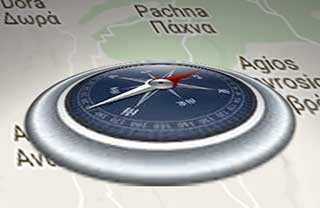
ListBlog Locations
Planning a day out? Then use our map of blog locations as a handy guide. Some of the places we visit our closer to each other than you might think, so take a look and start planning your next adventure...
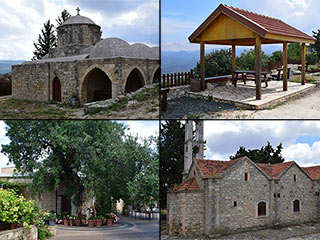
eBookCyprus Road Trip 01: the Kathikas - Panagia Loop
Let me take you on a journey around the region of Paphos, Cyprus. Starting at Paphos itself, we travel to Akoursos, then Kathikas, Kritou Terra and Simou. We continue past Lasa and Kannaviou, before taking in the delights of Panagia. Getting a bit more adventurous, we visit the abandoned villages of Statos and Agios Fotios, before passing through Choulou, Letymbou and Polemi, and rejoining the main Paphos - Polis road.
The route is suitable for all types of vehicle, and requires no off-roading. The guide contains about 130 photographs including shots of all the road signs you need to pay attention to, as well as some of the highlights you may experience along the way.
There are also several maps which will help you keep your bearings.
You can do this journey in a day, or you can break it up into chunks. You can also do it in reverse, to get some completely different views. It is entirely up to you.
